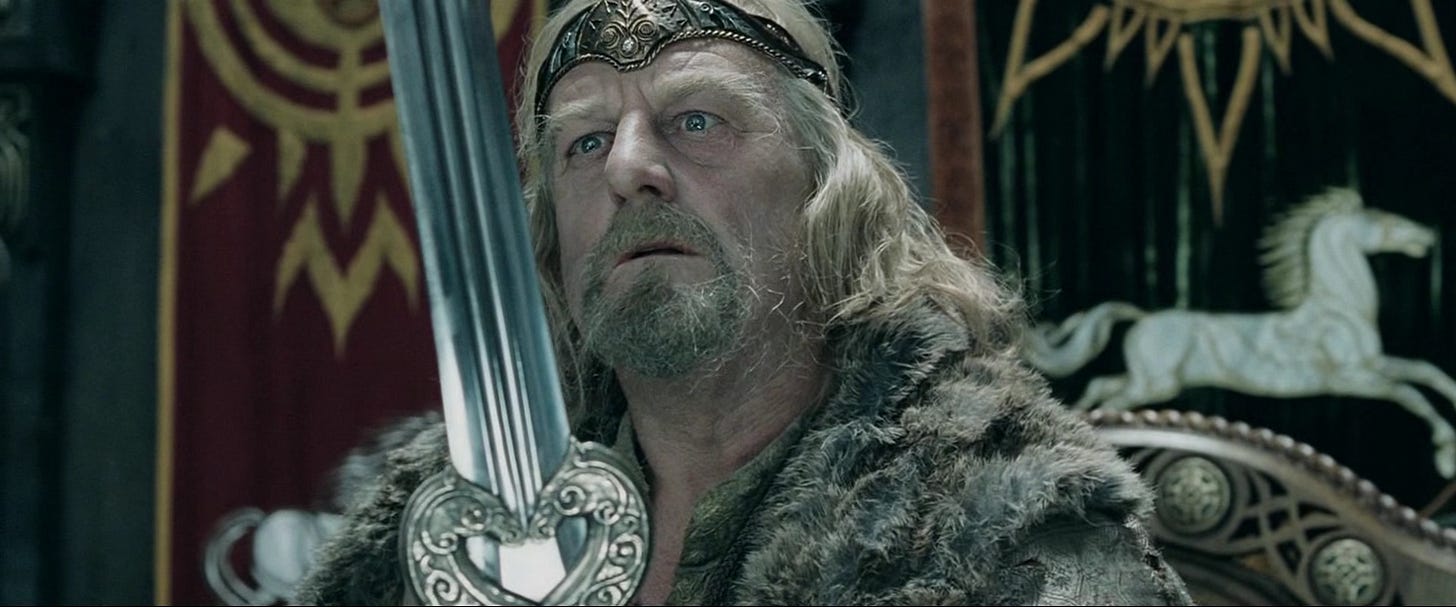I’m often taken aback by Tolkien’s understanding. Time after time, he proves that he just gets it. Case in point: Gandalf’s rescuing of Theoden from the darkness that has overcome him. These strategies might be as applicable in 2025 as they were in the Third Age of Middle-earth.
First: Get the patient away from wicked people
In other words, allow no more harm to be done—because the healing cannot begin until poisonous influences are cut off. This is why Gandalf orders Grima Wormtongue to be put face-down on the ground and to keep his “forked tongue behind [his] teeth.”
Once Wormtongue is no longer allowed to pour treason into Théoden’s ear, Gandalf can get to work.
Second: Get the patient outside
The air inside can become stuffy, stifling, unwholesome. Anxieties and doubts flourish indoors, and the ideas and fancies that strike while we shut ourselves in ought not be totally trusted. It’s for this reason that Wormtongue confines Théoden to his halls and Gandalf seeks to bring his patient out under the open sky, where fresh air and Vitamin D will begin to restore him.
“Too long have you sat in shadows and trusted to twisted tales and crooked promptings,” Gandalf tells Théoden. Pretty soon the clouds break and the sun is shining on his recovery.
Third: Get a sword in the patient’s hand
The previous step was about sun. Now we get steel. Ideally you would put a literal sword in the patient’s hand, but a metaphorical sword might have to do—something that reminds the man of his purpose and makes him feel something. Or it might mean getting the man doing the things that remind him. Swords can come in many forms.
Grima Wormtongue had cleverly hidden Théoden’s sword away. Gandalf trusts that the memories of strength will return if Théoden can hold it again. So he makes it happen, and it works.
Fourth: Have the patient stand tall
No more slouching. That’s what the bewitchers want, knowing that someone who stands at his full height will feel like more of a man. Therefore they design all sorts of contrivances (tiredness, despair, phones, desk-jockey jobs, etc) to pull your posture forward and down.
Gandalf tells Théoden that the years do not “lie so heavily on your shoulders as some would have you think.” At that point Théoden draws himself up, “slowly, as a man that is stiff from long bending over some dull toil.” He finds that Gandalf is right.
To slouch is to give the wicked forces constant power over you, as if your stooped shoulders carry the weight of their yoke. To stand tall is to re-assert freedom and agency.
Fifth: Reconcile the patient with his loved ones
In his illness, the patient has likely become estranged from loved ones. The Enemy desires this; he wants you to be far away from those who want the best for you. Cutting off their influence, he can have you all to himself.
If at all possible, it’s time to put these estrangements aright. So Gandalf tells Théoden to forgive and be reconciled to his nephew Eomer, his loyal nephew and true servant whom Wormtongue had turned him against.
At this point, Théoden is just about ready to go. He has lost precious time and endangered his whole kingdom by allowing himself to fall prey to evil forces. But opportunities still remain, and he will make the most of them.






As I was reading, I was thinking about Sun and Steel by Mishima, along with Father Ripperger.
To what does Theoden then aspire?